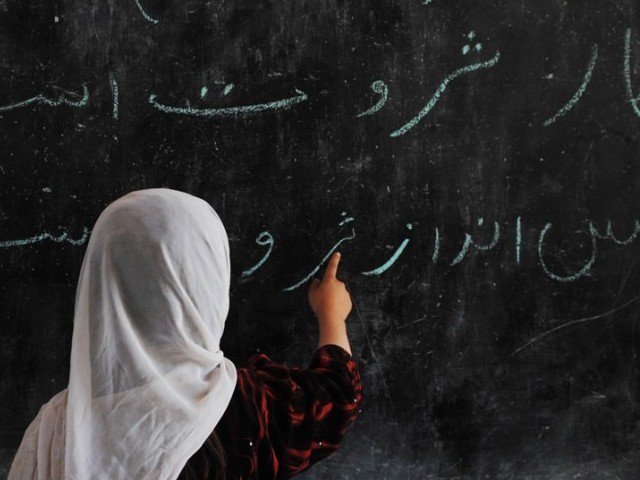
While talking to The Express Tribune, Alif Ailaan Campaign Director Mosharraf Zaidi said the ranking report helps in understanding the state of education in Pakistan and call to attention a deep and persistent national crisis. He added in the fourth annual report of rankings, they attempt to not only continue presenting updates on the two indices, of education and schools, but to also offer an analysis of trends that have emerged since 2013 in each district, province or region.
Stagnant
The ranking report for 2016, that is available with The Express Tribune shows that K-P and Sindh remain on the same positions as they were in 2015 – that is K-P stands on the fifth rank and Sindh on sixth out of the eight regions, including K-P, Sindh, Punjab, Balochistan, Gilgit-Baltistan, Azad Jammu and Kashmir and Islamabad, as it is the capital of the country.
The report shows K-P and Sindh have also gone down by around two points each in their education scores. In K-P, the score reduced mainly due gender parity and retention. As per the report, gender parity score is a measure of equity. The purpose of calculating gender parity is to ensure both girls and boys are equally enrolled. On the other hand, retention in education is gauged by statistics that show the continuation of a child’s schooling.
Within the province
However, district wise performance in the province is laudable as Malakand, Mardan and Haripur districts are ranked in the top 20 out of 145 districts/agencies from where data could be obtained. But Tank and Kohistan are ranked in the bottom 25 districts.
The gender disparity in schools of K-P is evident from the statistics that are mentioned in the report. There are 17,649 schools in the province for boys while 10,529 are for girls. These schools have 80,027 teachers for boys while for girls there are 43,264 teachers.
Since there is a difference in head count, dropout rate is also more for boys (25%) as compared to girls’ (46%) at a primary level.
Moreover, 53% of children in government schools cannot read a story in Urdu while 50% cannot read a sentence in English, whereas 52% of children cannot do a two-digit division sum. However, for school infrastructure K-P ranks third out of the eight regions.
Gauge
The purpose of report is to produce a measure of education standards in Pakistan that covers important policy areas for which data is available, including access, retention, learning outcomes, gender parity and school facilities and infrastructure.
The education departments in the respective regions will need to consider the urgency of improving educational quality in the country, which is not necessarily linked to infrastructure alone. While infrastructure is always going to be necessary for the functioning of schools, it is an insufficient condition for improving the quality of education.
Published in The Express Tribune, May 25th, 2016.











COMMENTS (1)
Comments are moderated and generally will be posted if they are on-topic and not abusive.
For more information, please see our Comments FAQ